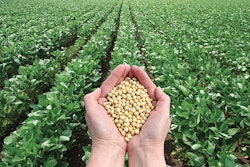
More than 100,000 sheep and cows reported lost in disaster
Australia’s livestock is being hit hard by widespread bushfires, as farmers struggle with herd losses and seek ways to feed their remaining animals.
In a grim statement over the weekend, Agriculture Minister Bridget McKenzie suggested farmers may need to euthanize animals that would otherwise suffer from smoke and burns and urged them to take photographs of injured and dead livestock to help with insurance claims. She said there have been reports of livestock losses in the thousands across South Australia, and that number continues to rise due to smoke and heat.
“I have been in contact with state agriculture ministers and state farming organizations to ensure we continue to work together to meet the needs of our ag sector during this emergency phase,” McKenzie said.
“In most cases, state government officials have not yet been able to get onto the fire grounds to assess livestock; however, several jurisdictions have indicated that they will be seeking assistance,” she added.
The New South Wales Rural Fire Service has asked farmers to assess the possibility of relocating their livestock away from areas affected by the fires.
McKenzie said animal welfare and proper disposal of dead animals to prevent disease spread are priorities. Reports said Australia’s Defence Force will dig mass graves to bury dead livestock in an effort to maintain biosecurity.
“While the National Livestock Identification System (NLIS) – which requires that movement of stock be tracked – still applies, getting animals to safety needs to be the focus.
“NLIS reporting can be undertaken when the animals are safely relocated. If in any doubt, contact the local department of primary industries in your state. Regardless, relocating stock during a bushfire is an enormous logistical challenge that in many cases may simply not be possible,” she said.
Feeding challenges
Feeding flocks and herds is another challenge facing farmers, as many locations are isolated from supply chains, and bringing hay into fire zones only increases fire risk.
“This challenge, along with re-establishing infrastructure like fencing and safe water supplies, is likely to take months rather than weeks,” McKenzie said. “Fodder requests and donations are managed at the state level and responsible organizations differ between jurisdictions. I encourage farmers to access these services as early as possible and thank those who have shown such generosity, with donations of fodder already on the ground across fire zones.”
She said the Agriculture Department will make veterinarians available to all states and territories to assist with stock assessments on individual farms.
“Our farmers and their communities are resilient, but they can’t do this alone. Recovery will be an exercise in national cooperation and compassion,” McKenzie said. “The Australian government stands ready to assist.”
Millions of acres burned, thousands of animals dead
It is estimated that nearly 15 million acres across Australia have been burned in the massive bushfires. Australia and New Zealand have sent military rescue operations to the affected areas to assist in evacuations and to bring supplies and medical care. At least 19 human fatalities have been reported
The National Farmers Federation estimates that more than 100,000 sheep and cows have been lost in the fires. As of Monday afternoon, according to one report, nearly 3,900 animals had been euthanized.
In November, the New South Wales government said it was offering emergency support to farmers in regions hit by drought and bushfires.








